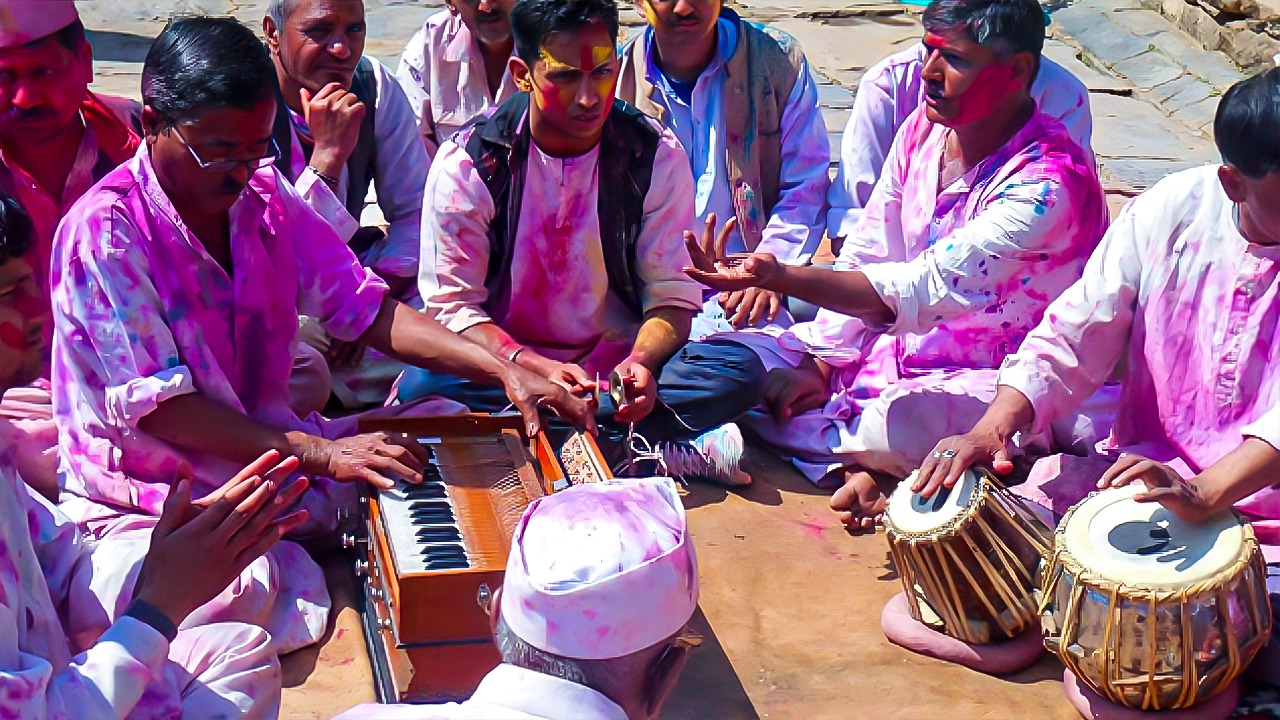
When you hear cheerful cries of “Bura na mano Holi hai!”, meaning ‘Please don’t mind if I shower you with colours on this Holi day!’, you know people are in the mood for some serious fun and to celebrate the bright colours of life.
For the uninitiated, there are two dimensions to the Holi celebration in India occurring each year. First, on the eve of Holi, typically at or after sunset, a big bonfire is lit, signifying Holika Dahan, and people perform pooja and enjoy time around it with yummy sweets. The legend behind this ritual is of Hiranyakashyap, the demon king, and his son Prahlad. Prahlad was Lord Vishnu’s devotee, which did not sit well with his father. To teach Prahlad a lesson, he asked his sister Holika, who had the boon that she would not burn in fire, to sit with Prahalad in a bonfire blaze, so his devotion to Vishnu dies with him. To everyone’s amazement, when the fire was lit up, Prahlad remained unharmed as he chanted the Vishnu’s name while Holika burned to death. To celebrate this victory of good over evil, Holi is celebrated every year.
The more popular and well-known Holi of colours is typically celebrated with great joy and excitement the following day. The festival is also called the festival of harmony. Even enemies become friends by forgoing all their disputes and partaking in this playful festival that triggers a carnivalesque spirit among people of all age groups. Holi heralds the arrival of spring with its myriad coloured blooms, and Lord Krishna is said to have played Holi with his friends and the Gopis at Vrindavan.
Table of Contents
Holi festivity varies across India
India is a vast and diverse country with different cultures and traditions. Different parts of India celebrate Holi differently, but with the same sentiments of joy, enthusiasm, and harmony.
Lathmar Holi, UP
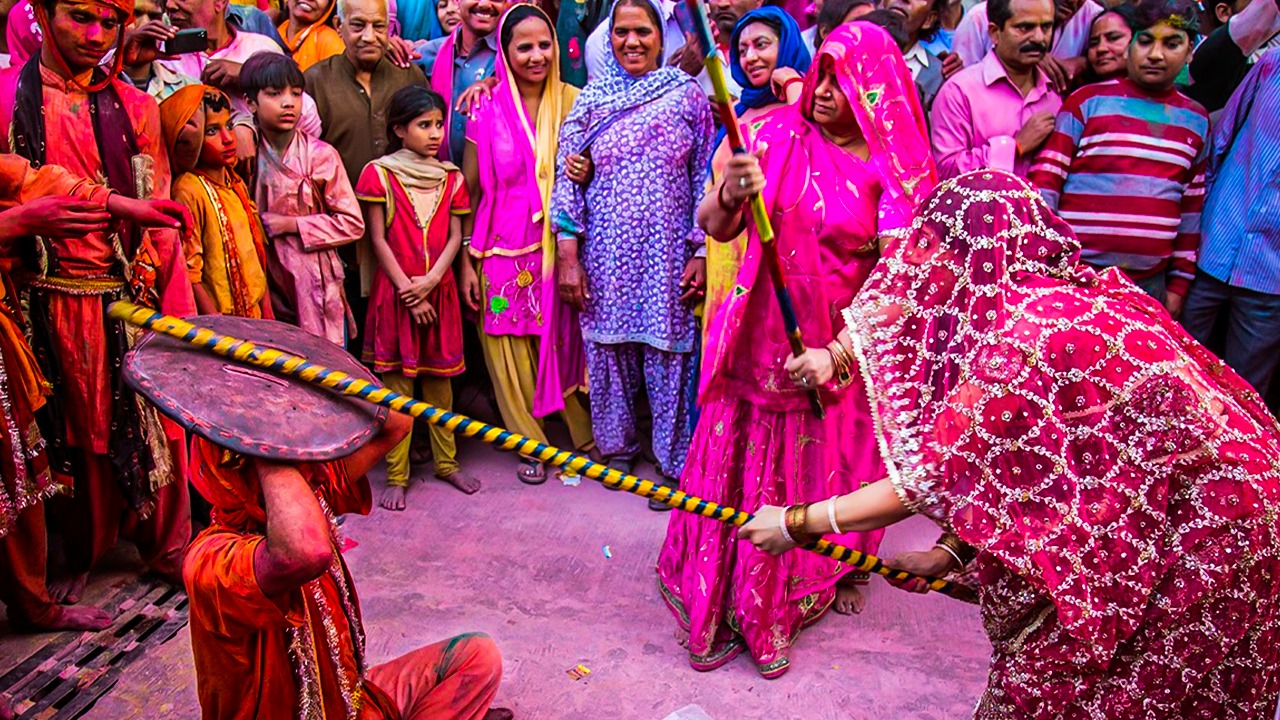
The Lathmar Holi is one of the most exciting and one-of-a-kind celebrations of Holi. This is celebrated in the native lands of lord Krishna, namely Vrindavan, Barsana, and Mathura. The Lathmar Holi has been celebrated here since time immemorial and is rich in cultural, historical, and religious significance.
People from all over India and World come to Uttar Pradesh to experience the Lathmar Holi. ‘Lathmar’ word comprises two Hindi words ‘lath‘ (meaning cane) & ‘mar‘ (meaning to hit). The women hit the men with the canes and run after them, while the men come prepared with shields (dhal) to protect themselves. People sing bhajans, tell folklores and chant ‘Radha Krishna’. The streets are filled with colours, flowers, and lots of happiness.
Phaguwa, Bihar
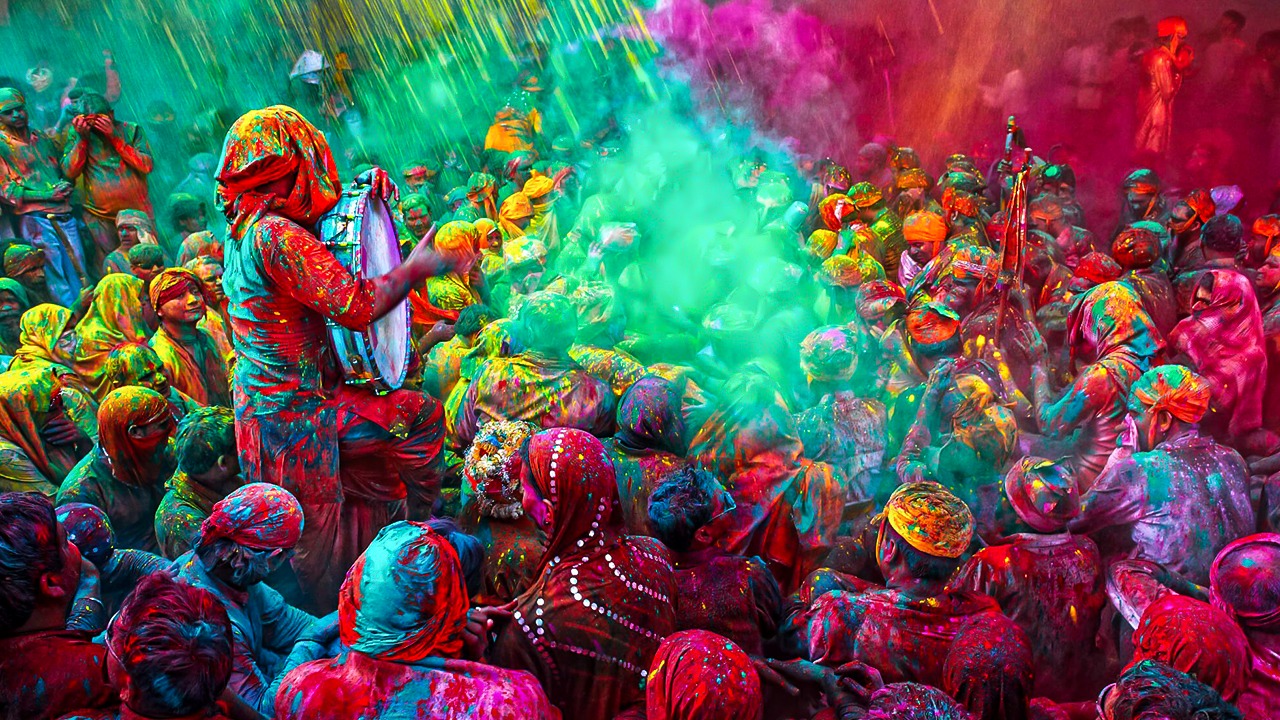
Holi is called Phaguwa in Bihar in their local language Bhojpuri. The festival is celebrated with love and joy, as people sing local folklore and songs in their native language.
The festival is celebrated traditionally with a drink called ‘Thandai‘ (usually made with bhang & dry fruits) and sweets such as Gujiya, Rasgulla, Gulab Jamun, Gul-gula, Pholourie, etc. The Holi in Bihar is a beautiful blend of colours, sweets, music, dance, and happiness. People often meet their friends and family for Holi greetings and blessings, strengthening their bond.
Basant Utsav and Dol Jatra, West Bengal
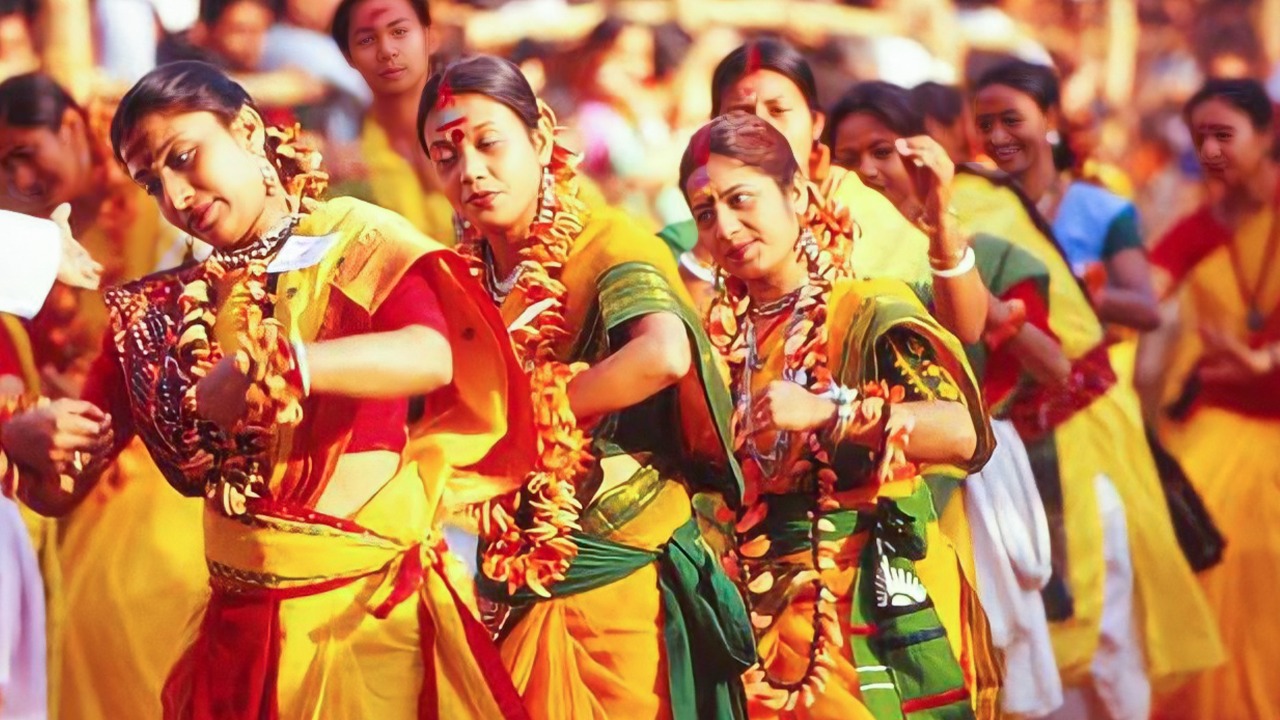
Holi in West Bengal is known as Basant Utsav or Dol Jatra. On this auspicious day, people dress up in traditional yellow clothes. Holi is celebrated the traditional way with ‘Radha Krishna‘ idols.
The atmosphere throughout the day is very jolly and upbeat. Women dance and sing bhajans and folklores while dancing in circles with ‘Radha Krishna‘ idols in the centre. These idols are placed on swings (Jhoola), and people take turns swinging them. Holi is played here with water and Abeer (coloured powder), and the celebrations usually go on from morning till evening. The Basant Utsav was introduced by the legendary poet Rabindranath Tagore. On this day, many events are also organized where the works of Rabindranath Tagore are recited and glorified.
Dola, Orissa
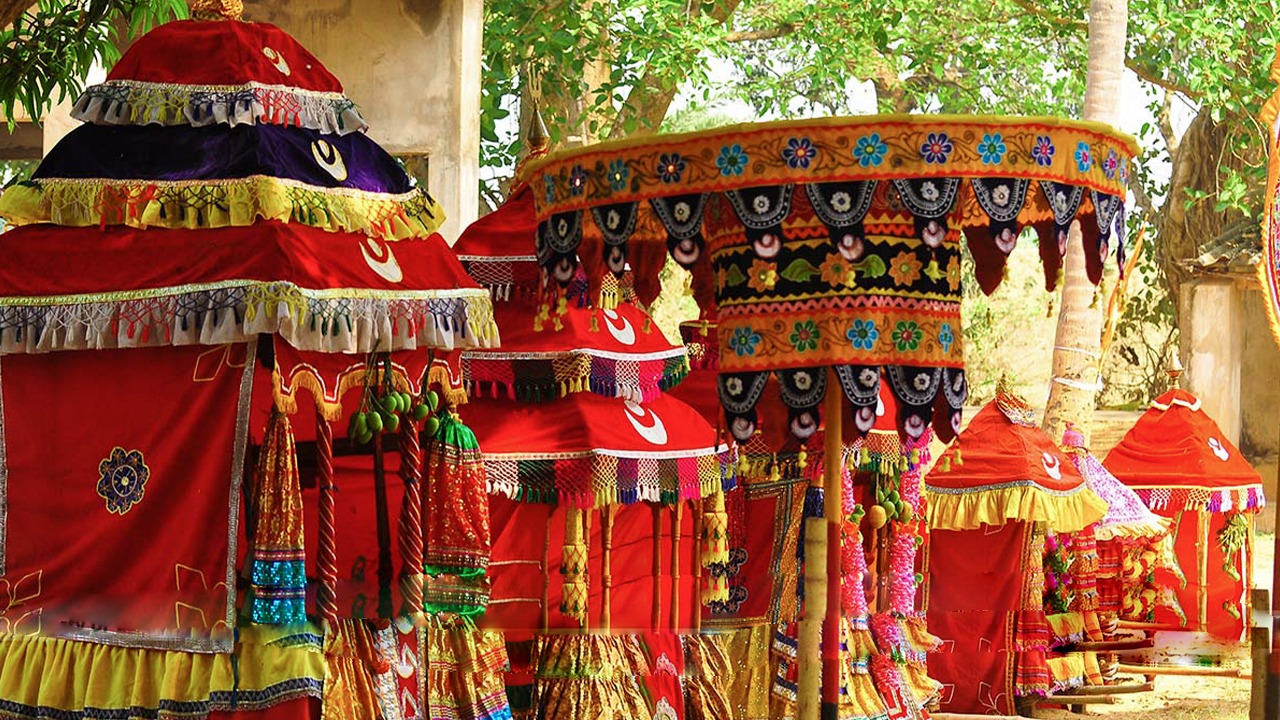 Holi in Orissa is also known as Dola or Dol Jatra. These celebrations are very similar to the Holi in West Bengal and last for three days and celebrate the spring season.
Holi in Orissa is also known as Dola or Dol Jatra. These celebrations are very similar to the Holi in West Bengal and last for three days and celebrate the spring season.
Women in their traditional attires perform the traditional dance. During the whole celebration, the most important event is the Dolagobinda, where the procession of Lord Jagannath is feted and carried through various cities. Lord Jagannath is also one of the avatars of Lord Krishna. Traditional sweets such as Feni, Petha, Laddoo, & Thandai are also served and are the main attraction throughout the festival.
Ukuli, Kerala
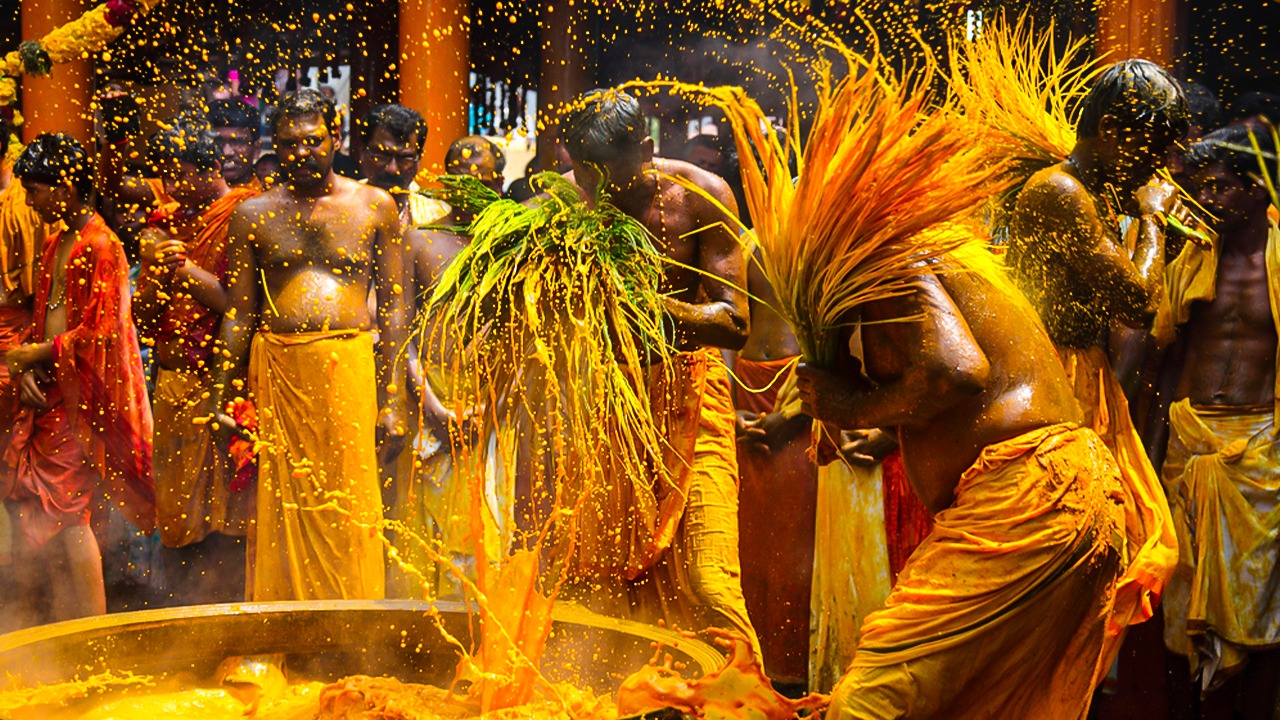
Holi in Kerala is celebrated for two days when the Konkani and Kudumbi communities visit the Konkani temple of Gosripuram Thirumala. Holi here has many names such as Ukuli, Manjal Kuli, Kaman Pandigai or Kama-Dahanam. Instead of artificial colours, Holi here is celebrated with turmeric powder and natural colours. In some places, the story of Kam Dev’s wife is also narrated as it’s considered the win of spirituality over marital bliss.
Turmeric is used because it’s believed to help relieve the Burns of Kam Dev. People sing traditional songs and perform traditional dances. Holi in Kerala is rich in culture, heritage, and history. Many people from all over the world come here to experience this festival.
Shigmo, Goa
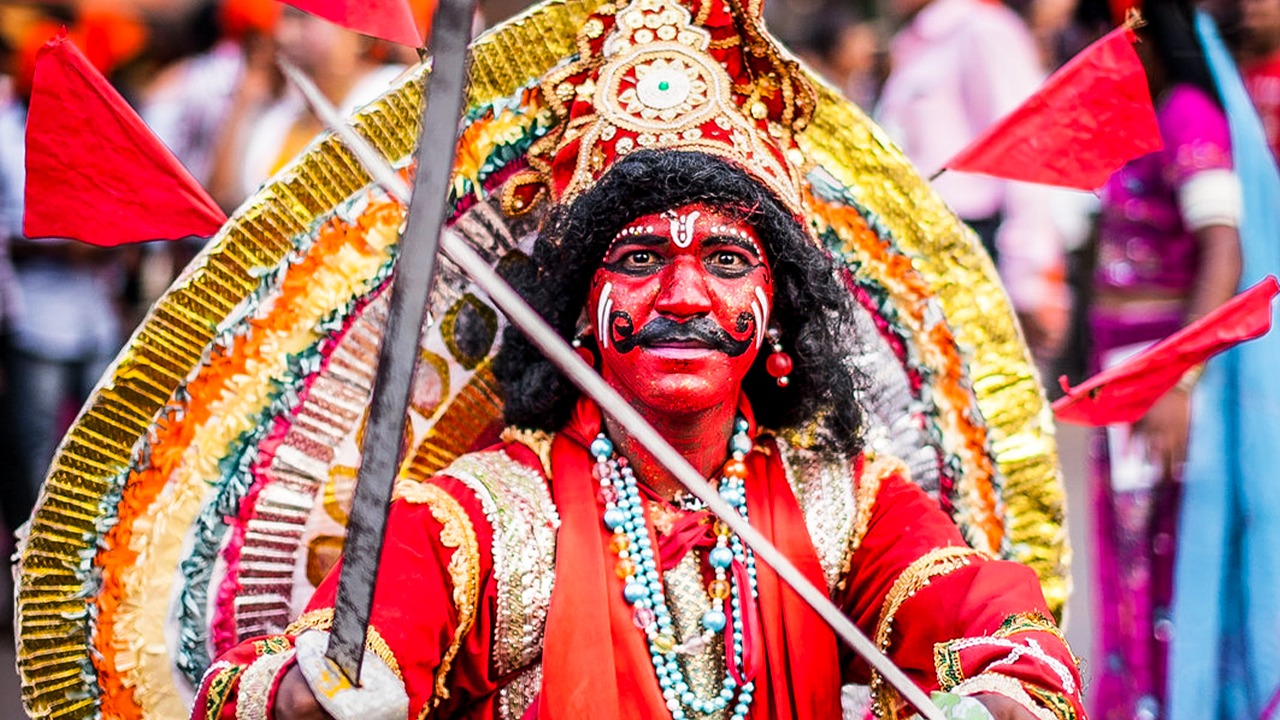
Holi in Goa is celebrated as Shigmo Shimga or Shishirotsava. The festival is celebrated for 14 whole days to bid farewell to the winters and the ripening of the winter crops.
The festival’s first day starts with bathing and dressing the village deity in a saffron robe. The celebration of colours is on the fifth day of the festival, called the Rang Panchami. The last four days of the festival are the closing days. And people dress in bright colours and sing and dance in processions while carrying Dhwaj (flags) in their hands.
Hola Mohalla, Punjab
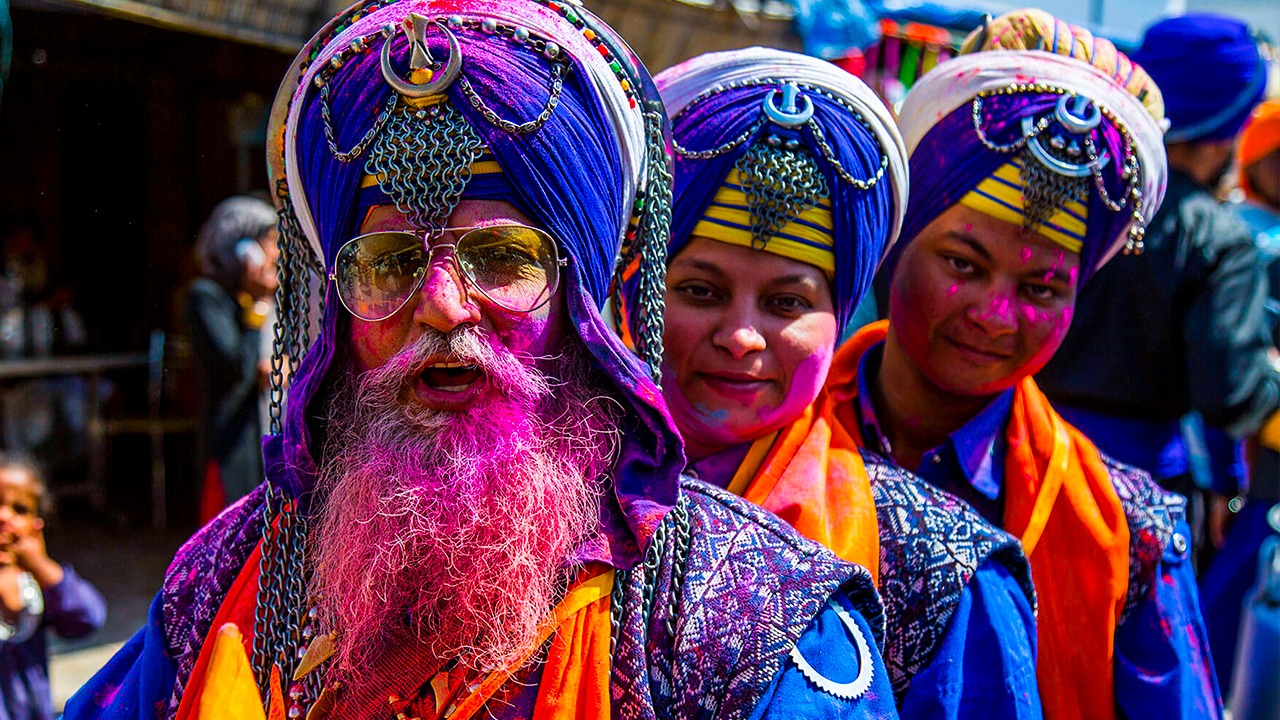 In Punjab, Holla Mohalla is celebrated one day before. This tradition was Started by Sri Guru Gobind Singh Ji, The tenth Guru of the Sikhs. The Holla Mohalla is celebrated by presenting martial arts, folk songs, dancing to Bhangra beats, and honouring the warriors.
In Punjab, Holla Mohalla is celebrated one day before. This tradition was Started by Sri Guru Gobind Singh Ji, The tenth Guru of the Sikhs. The Holla Mohalla is celebrated by presenting martial arts, folk songs, dancing to Bhangra beats, and honouring the warriors.
Baithaki Holi, Uttarakhand
Holi in Uttarakhand is Also known as Baithaki Holi, Kahila Holi, and Khadi Holi. It’s the perfect depiction of Holi in the mountains.
People here gather together in their traditional clothes and perform the local dance. Local and traditional food is also made in the morning. After worshipping the Gods, people celebrate the festival with music, dance, and colours.
Yaosang, Manipur
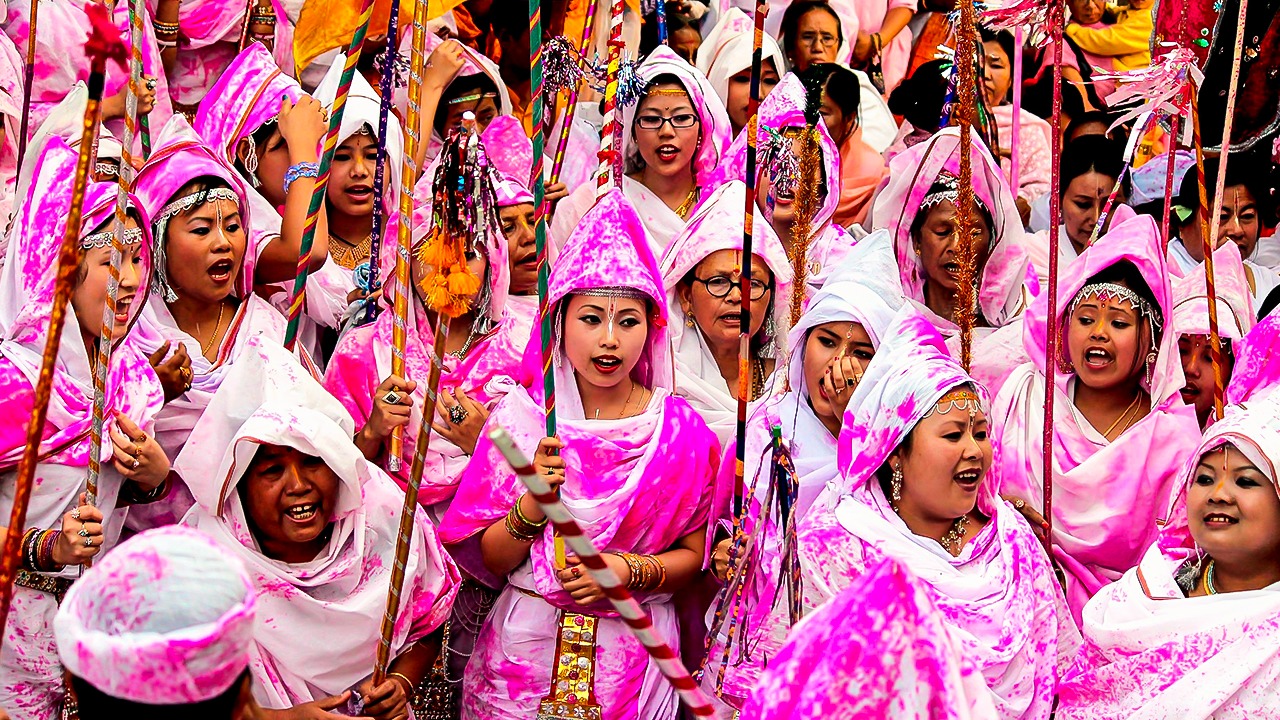
The festival of Holi is celebrated as the Yaoshang festival in Manipur. The festival is celebrated for six days. The local people dance to the regional music in their traditional attire under the moonlight. On the day of colours, boys gather in groups to play Holi with girls. The girls, in turn, playfully attempt to get money from the boys. People visit the Krishna Temple in Imphal on the closing day to pray.
Go ahead and plan a holiday to one of these states to witness their Holi celebrations and take in the beautiful sights & sounds of the place. Search and book flights & hotels to all destinations through Aertrip.

